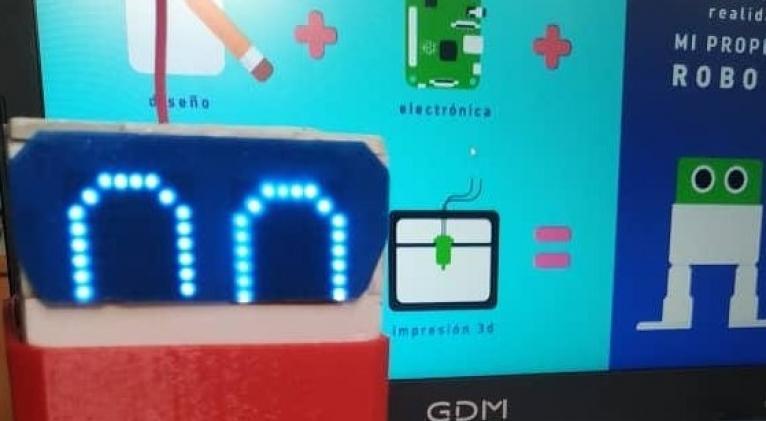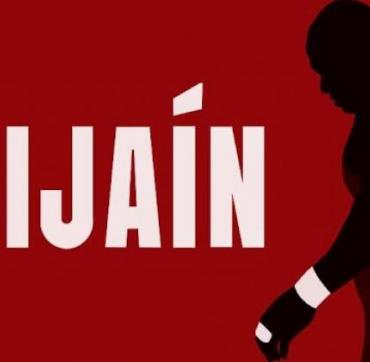Bringing your own robot to life
especiales

It seemed like the ten million question in my childhood, but today it is not a crazy or sci-fi thing. In Cuba, several technological and creative spaces have answers to this question.
Ariel Lima Pérez is coordinator of the Makercitos Local Development Project (LDP), one of the Cuban experiences that he has opted for the development of robotics, especially with adolescents and young people.
—How did the project start?
—We began to develop robotics courses in Old Havana about three or four years ago. First, it was a contest for university students where we started from the robots that we are currently using, Otto, and they had to make them as intelligent as possible; that is, add electronics to them and provide artificial intelligence and so on, to meet a set of conditions that we asked for in the contest.
—How do adolescents get involved with it?
—In the A+ Espacios Adolescentes Center, here at the Office of the City Historian, we are running the workshops “Cómo hacer tu propio robot (How to make your own robot).” There, we taught them how to make the robot, dividing it into four subjects: Design, Digital Manufacturing —which is itemized into Digital Design and 3D Printing—, Electronics and Programming. At the end of the course, they have an integrating subject, where they make their robots with everything they learned, design the body, put the electronics on it, assemble it and then program it.
“There is also an optional subject that is Artisan Manufacturing, where they design with recycled materials, which can be PVC, cans, plastic knobs, cardboard... And up to the present, we continue with the courses here at the Center.”
—Why adolescents and not younger children?
—The fact is that they need basic knowledge on elements of Mathematics that have to do with geometry and, above all, geometry of space. So we generally work with boys and girls between 12 and 18 years old.
“The robot we use is called Otto. It was originally designed by Camilo Parra Palacios, who is a Colombian professional, for a project of which I am the representative here in Cuba. But, really, the robot is a teaching aid, because we are more focused on what boys and girls may learn by doing, hence enjoying the process even more. They learn to stop being consumers and understand the need to be producers. In other words, the same phone they generally use to play or to be on social networks. We teach them that it is not only useful for you to consume, but also to learn, to develop new things, and even link it with the subject of robotics.”
—Have these workshops been taken to other spaces in Havana? To other provinces of the country?
—During one of those brief periods in which the COVID situation improved somehow in Havana, we ran workshops at the Finca de los Monos technology park. In addition, we have representation in several provinces of the country, among which Camagüey stands out, a place with the highest number of official workshops developed with Otto.
—What scope or impact have these workshops had on the community?
—Since we started the first workshops, it was an initiative that spread widely, and not only in the municipality of Old Havana, despite the fact that it is here where the vast majority of the workshops have been held, but also that young people from nearly all provinces come every month to enroll in the workshops; we have had to close them due to capacity.
“Recycling is one of those topics where robotics has positively impacted because between the Electronics and Artisan Manufacturing lessons, they bring pieces of old toys, cardboard... everything they see that they can reuse to make the robot.
“In addition to working with teenagers, we had a robotics contest for adults, and university students, professionals, self-employed workers participated...
“In addition to robotics, we now have a contract with Banco Metropolitano to supply them with spare parts for ATMs, through the work we are doing on reverse engineering and developing them with 3D printing. BANDEC and BPA are also joining, which would already give it a national scope.”
—Are you satisfied with your job?
—Some of the boys and girls who participated in the first courses, that is, who have already graduated from schools, are currently working with us; or some who are already university students, in the same workshop, are supporting us in the courses as teachers or instructors. In fact, the one we are opening now is the first taught by two boys who were our students here.
We are pleased to see that many of these boys and girls have chosen related careers. That is, they are close to industrial design, computer science, cybernetics, automation, telecommunications, which are careers related to the subjects we teach in robotics workshops. In fact, many ask us about our own experiences. Therefore, the content we are teaching has been important in their vocational training.
Recently, the project was awarded at the First Local Development Fair in Havana, and I participated as a jury in a robotics contest organized by the Joven Club.
-Are you planning to open a course soon?
—In the A+ Center, at Teniente Rey and Compostela streets, we will have enrollment for the four weeks of August. Details are notified by the Makercitos web page or by the A+ profile on Facebook.
-Other projects?
—Soon, we are going to open a space in La Maestranza Park, here in Old Havana, where we plan to do activities focusing on younger children, since many families have approached us asking for it. As LDP, we are now managing a property, where we would also have spaces for all ages, from the youngest to the oldest at home.
Translated by Sergio A. Paneque Díaz / CubaSí Translation Staff














Add new comment